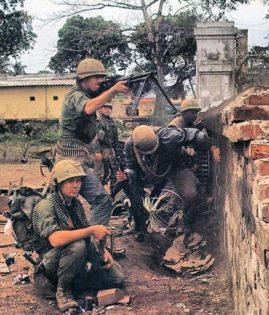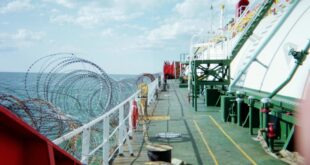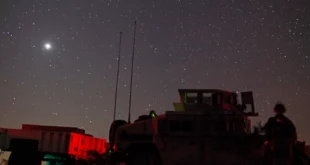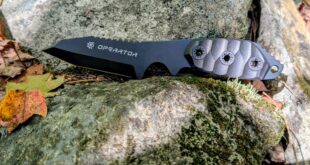
54 years ago, the Battle of Hue City began where two Marines earned the Medal of Honor. GySgt. John L. Canley received the Medal of Honor on October 17, 2018, for his heroic actions during the battle.
2020:
Hue City: A famous urban battle Marines can learn from
By Valerie O’Berry/CommStrat Office
The Battle of Hue City, Vietnam has come to be regarded as one of the most infamous urban battles in Marine Corps history. The Battle of Hue City occurred with the Tet Offensive, where Marines were surprised by a North Vietnamese Army (NVA) attack during what was supposed to be a cease fire negotiated during a Vietnamese holiday. The battle started on Jan. 30, 1968 and didn’t end until March 3, 1968.
Vietnam War veterans and retired Marines Lt. Gen. George “Ron” Christmas and Brig. Gen. Michael Downs, who were then captains serving as commanding officers in Hue, recently spoke about their experiences in the Battle of Hue City to an eager group of staff-noncommissioned officers (SNCOs) during a Professional Military Education (PME) event held at Marine Corps University. The PME was planned in honor of the 50th anniversary of the battle and it also honored Vietnam Veterans Day, which is March 29. The two generals not only told the SNCOs about the difficult fight, but also told them about the lessons learned that can be beneficial to Marines today.
The generals said that Hue City was unique in that it is divided into two parts by the Perfume River. There were also many obstacles to navigate including moats and walls. Marine units were located on the outskirts of the city to the south and west when they were attacked by the NVA Jan. 30 as part of the Tet Offensive. Only two buildings in the city were held by Marines.
The Marines on the outskirts of the city were able to fend off the initial Tet Offensive attack and back the NVA up to the river, but within a few days the Marines were ordered to take back the entire city, which had become overrun by NVA. The Marines ordered into the city were at a disadvantage as there was no air support available to them for the first to 10 days.
Christmas was leading Hotel Company into Hue City from the south. Since Vietnam was expected to be a jungle fight, Marines who fought in Hue had only one hour of training in urban combat. This is where their training to fight in “any clime and place,” and adapting to and overcoming situations proved essential.
“[In urban combat] you may want to know that one of the things you’re supposed to do is isolate the city,” said Christmas. “Then, you need to select where you enter the city, then you can determine what you are going to use to take the city. None of that was available. The city was totally overrun, so we’re not about to isolate it because we don’t have the forces. We are going to have to fight our way in piecemeal and then gather up and retake the city from within.”
In another part of the city, where Downs’ company was flown in by helicopter, he was leading his men from building to building but had to use ingenuity and tear gas to do so.
“We would progress in this way throughout the fight,” said Downs.
In one instance, Downs says there was a machine gun directly down a street that his Marines needed to cross to advance their attack. While Downs was deciding how to approach this problem a young lance corporal and a private first class came up with an idea.
“I know how to do this,” said the lance corporal according to Downs. “Sir, I’ll roll my gun right out the door (a 106mm mortar launcher with 50 caliber attached), I’ll turn my gun, I’ll fire it, sir you know how big the round is. They’ll pull their heads and you can run the whole company across the street if you want.” That’s exactly what Downs decided to do, and it worked.
“This is called lance corporal ingenuity and Pfc. power. It’s alive and well today and is in response to your leadership,” said Downs to the SNCOs gathered in the lecture hall.
Marine ingenuity was showcased in the battle to retake Hue City. The Marines had to use the weapons that were available and often, they were used for other than their intended purpose.
For example, anti-aircraft vehicles called “dusters” were used in the front and the back of a 12-truck convoy heading into Hue City since there were no tanks available. The lightly armored dusters did not provide as much armor as a tank, but they were effective.
“[People would say] that weapon isn’t for use in an urban environment. Forget that. If you can use the weapon to do what you need to do in the city, you use the weapon. It’s all up in here,” Christmas said, pointing to his head. “You know where those decisions come from? It comes from the non- commissioned officers.”
Urban battles are also known for close combat fighting.
“The enemy was 35 meters away and we were launching RPGs (rocket-propelled grenades) at each other,” said Christmas. “The enemy was so close to us that when the round went up, it went up so high that we thought it was going to come down right on top of us.”
“Remember, an urban fight is a casualty producing fight. It’s not just the round but all the debris that comes off of it. Why is that important? You’ve got to protect your corpsman,” said Downs.
In addition, in any combat fight, there are going to be innocent civilian bystanders.
“This will differ by city, it will differ by what the NVA does. The enemy usually pulls them all together and tries to build a buffer,” said Christmas. This can be a tricky situation for any Marine – trying to save civilian lives while in the process of a firefight. This is also where the Marine needs to use their ingenuity.
During the Battle of Hue City, most of the civilians hid out in buildings, according to Christmas.
“But once you get them out you have to take them out the way you came in. This could mean going through the same holes and breaches that you have been through. We walked them down the streets until they were out of the line of fire. You have to deal with it. You have to work out how to deal with it.” Once again, NCOs must think outside of the box to accomplish the mission.
“We take care of civilians,” added Downs.
Of course, with any firefight, there will be mistakes made. But, both generals agreed that you learn from those mistakes and you have to live with them.
Christmas says there’s not a day that goes by that he doesn’t think about two mistakes he made during the Battle for Hue City. One had to do with machine guns, which he didn’t elaborate on. Another mistake was that he didn’t move his snipers around and the NVA found the snipers and fired many RPGs at them.
“I live with that to this day,” Christmas said.
He went on to say that what is important is that each Marine stay above the emotion of the fight.
“We’re all emotional, we care about our Marines. That young Marine of yours, that corporal who has always been the joy of everybody and always has a joke, gets killed next to you. It’s pretty easy to get emotional, but what leaders get paid for is to stand above the emotion. It’s not easy,” said Christmas. “But if you can do that you will make the right decision. If you get emotional about it you won’t.”
Downs agreed that the emotional aspect of the fight is important and that he had his own way of dealing with the pain. He essentially made a memorial of each Marine by keeping a book in which he wrote down the names and dates of all Marines killed and injured during the battle. It helps him remember them.
“It is an enlisted man’s war in many respects. We had 30 personal decorations awarded to the company and of the 30, 27 were enlisted with 24 being corporals and below,” Downs said.
Both generals went back to Hue City decades after the battle. Quantico Marines enrolled in Marine Corps University have also toured the city to learn from the history of the battle, a common way for Marines to learn leadership and learn from the Marines who came before them. The passing down of information from Marine to Marine is a cornerstone Marine training.
Downs said that Hue City has been rebuilt since the battle; however, there are still reminders of the fight that occurred there. In some of the buildings today, the remnants of the fight remain; there are pock marks in some of the building’s exteriors that were hit with machine gun fire and M16 bullets. But, the city overall is beautiful.
“Whether you like it or not you are all leaders and someday, one way or another, you will be involved in urban operations,” Christmas said. “The world is urban and that’s where you’re going to fight and it’s up to you to ensure that you prepare yourself. Everybody will fight. Everybody is a rifleman. When you leave here, think about urban warfare and think about your contribution.”
 Soldier of Fortune Magazine The Journal of Professional Adventurers
Soldier of Fortune Magazine The Journal of Professional Adventurers





